Related Research Articles
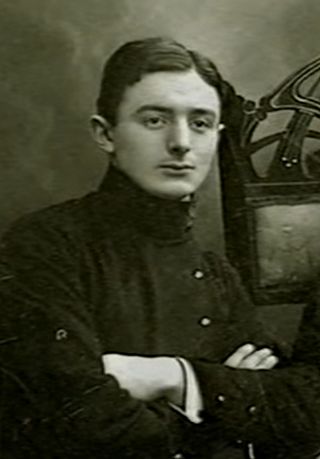
Dziga Vertov was a Soviet pioneer documentary film and newsreel director, as well as a cinema theorist. His filming practices and theories influenced the cinéma vérité style of documentary movie-making and the Dziga Vertov Group, a radical film-making cooperative which was active from 1968 to 1972. He was a member of the Kinoks collective, with Elizaveta Svilova and Mikhail Kaufman.
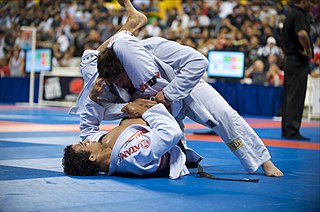
Brazilian jiu-jitsu is a self-defence martial art and combat sport based on grappling, ground fighting, and submission holds. BJJ focuses on taking ones opponent down to the ground, gaining a dominant position, and using a number of techniques to force them into submission via joint locks or chokeholds.
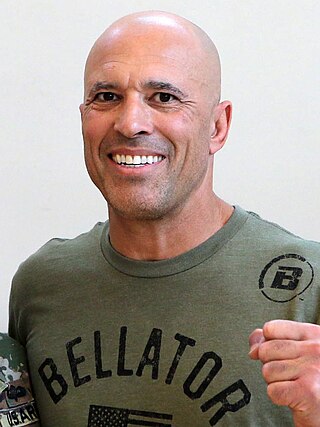
Royce Gracie is a Brazilian retired professional mixed martial artist. Gracie gained fame for his success in the Ultimate Fighting Championship (UFC). He is a member of the Gracie jiu-jitsu family, a UFC Hall of Famer, and is considered to be one of the most influential figures in the history of mixed martial arts (MMA). He also competed in PRIDE Fighting Championships, K-1's MMA events, and Bellator.

Visual anthropology is a subfield of social anthropology that is concerned, in part, with the study and production of ethnographic photography, film and, since the mid-1990s, new media. More recently it has been used by historians of science and visual culture. Although sometimes wrongly conflated with ethnographic film, visual anthropology encompasses much more, including the anthropological study of all visual representations such as dance and other kinds of performance, museums and archiving, all visual arts, and the production and reception of mass media. Histories and analyses of representations from many cultures are part of visual anthropology: research topics include sandpaintings, tattoos, sculptures and reliefs, cave paintings, scrimshaw, jewelry, hieroglyphics, paintings and photographs. Also within the province of the subfield are studies of human vision, properties of media, the relationship of visual form and function, and applied, collaborative uses of visual representations.

Renzo Gracie is a Brazilian mixed martial artist and 7th degree coral belt Brazilian jiu-jitsu practitioner and coach. A third generation member of the Gracie family, he is the grandson of Gracie jiu-jitsu co-founder Carlos Gracie, grandnephew of Helio Gracie, nephew of Carlos Gracie Jr. and the son of Robson Gracie.

Timothy Asch was an American anthropologist, photographer, and ethnographic filmmaker. Along with John Marshall and Robert Gardner, Asch played an important role in the development of visual anthropology. He is particularly known for his film The Ax Fight and his role with the USC Center for Visual Anthropology.
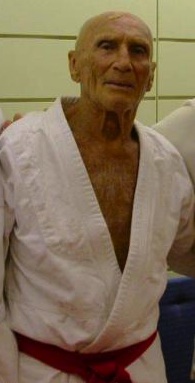
Hélio Gracie was a Brazilian martial artist who together with his brothers Oswaldo, Gastao Jr, George and Carlos Gracie founded and developed the self-defense martial art system of Gracie jiu-jitsu, also known as Brazilian jiu-jitsu (BJJ).
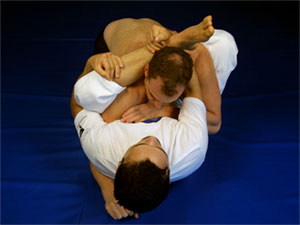
Edgar Bravo is an American martial arts instructor, podcaster, stand-up comedian, and musician. After earning a black belt in Brazilian Jiu-Jitsu in 2003, Bravo began teaching his own self-developed style of jiu-jitsu and founded 10th Planet Jiu-Jitsu. He is also the creator of the Eddie Bravo Invitational (EBI) grappling competition and the EBI ruleset. He is a recurring guest on The Joe Rogan Experience and the Tin Foil Hat Podcast.

Royler Gracie is a Brazilian-American retired mixed martial artist and Brazilian jiu-jitsu practitioner. Gracie ran the Gracie Humaitá school in Rio de Janeiro for many years under his father Helio's direction, and lives and teaches in San Diego, California. Considered a legend of jiu jitsu and submission wrestling, Gracie is a member of both the IBJJF Hall of Fame, and the ADCC Hall of Fame.
The USC Center for Visual Anthropology (CVA) is a center located at the University of Southern California. It is dedicated to the field of visual anthropology, incorporating visual modes of expression in the academic discipline of anthropology. It does so in conjunction with faculty in the anthropology department through five types of activities: training, research and analysis of visual culture, production of visual projects, archiving and collecting, and the sponsorship of conferences and film festivals. It offers a B.A. and an MVA in Visual Anthropology.

Carlson Gracie was a practitioner of Brazilian jiu-jitsu. A member of the Gracie family, he was the eldest son of Carlos Gracie, and nephew to Hélio Gracie, founders of Gracie jiu-jitsu.

Carlos Gracie was a Brazilian martial artist who is credited with being one of the primary developers of Brazilian jiu-jitsu. Along with his younger brother Hélio Gracie and fellow students Luis França and Oswaldo Fadda, he helped develop Brazilian jiu-jitsu based on the teachings of famed Japanese judōka, Mitsuyo Maeda in Kano Jujitsu (Judo) and is widely considered to be the martial-arts patriarch of the Gracie family. He purportedly acquired his initial knowledge of Jujitsu by studying in Belem under Maeda and his students. As he taught the techniques to his brothers, he created a martial arts family with Hélio and with other members of the Gracie family who provided key contributions to the style and development, eventually creating their own self defence system named Gracie Jiu-Jitsu. Gracie Jiu-Jitsu is distinct from its indirect predecessor jujutsu, focusing primarily on the grappling techniques while downplaying the striking elements common among older schools of Japanese jujitsu.

Rorion Gracie is a Brazilian-born Gracie Jiu-Jitsu Grand Master, a prominent member of the Gracie family, writer, publisher, producer, lecturer, lawyer and the co-founder of the Ultimate Fighting Championship. He is the oldest son of Hélio Gracie and one of the few people in the world to hold a 9th degree red belt in Brazilian Jiu-Jitsu, and is widely recognized as one of the men responsible for introducing Gracie/Brazilian Jiu-Jitsu to the United States and the world.
The Gracie family is a family of martial artists originally from Belém, state of Pará, Brazil whose ancestors came from Paisley, Scotland. They are known for promoting the self-defense martial arts system of Gracie Jiu-Jitsu, commonly known as Brazilian jiu-jitsu, originating from Kano jiu-jitsu (Judo) brought to Brazil by judoka prizefighter Mitsuyo Maeda.

An ethnographic film is a non-fiction film, often similar to a documentary film, historically shot by Western filmmakers and dealing with non-Western people, and sometimes associated with anthropology. Definitions of the term are not definitive. Some academics claim it is more documentary, less anthropology, while others think it rests somewhere between the fields of anthropology and documentary films.

Ethnocinema, from Jean Rouch’s cine-ethnography and ethno-fictions, is an emerging practice of intercultural filmmaking being defined and extended by Melbourne, Australia-based writer and arts educator, Anne Harris, and others. Originally derived from the discipline of anthropology, ethnocinema is one form of ethnographic filmmaking that prioritises mutuality, collaboration and social change. The practice's ethos claims that the role of anthropologists, and other cultural, media and educational researchers, must adapt to changing communities, transnational identities and new notions of representation for the 21st century.
Rise Up is a 2007 documentary film by director and cinematographer Luciano Blotta. The film documents the world of underground music in Jamaica following the efforts of three musicians to break into the mainstream, and vicariously exploring a variety of socio-cultural issues relating to poverty, violence, and post-colonial corruption.
Bobby Razak is an English film director and producer, best known for his work in the genres of mixed martial arts and extreme sports. Razak is also the founder of Tapout Films.

Carlos Robson Gracie Sr. was a Brazilian martial artist. The second son of Carlos Gracie, Gracie was a 9th degree red belt in Brazilian Jiu-Jitsu, affording him the title of Grandmaster.

Kino-Eye is a film technique developed in Soviet Union by Dziga Vertov. It was also the name of the movement and group that was defined by this technique. Kino-Eye was Vertov's means of capturing what he believed to be "inaccessible to the human eye"; that is, Kino-Eye films would not attempt to imitate how the human eye saw things. Rather, by assembling film fragments and editing them together in a form of montage, Kino-Eye hoped to activate a new type of perception by creating "a new filmic, i.e., media shaped, reality and a message or an illusion of a message - a semantic field." Distinct from narrative entertainment cinema forms or otherwise "acted" films, Kino-Eye sought to capture "life unawares" and edit it together in such a way that it would form a new, previously unseen truth.
References
- ↑ "GRACIE UNIVERSITY: Global Brazilian Jiu-Jitsu (BJJ) Instruction – Straight from the Source".
- ↑ http://www.fightcon.com/viewVideo.php?video_id=4837&title=The_Gracie_Challenge%5B%5D
- ↑ "Martial Arts Video Gallery - Style Videos". Archived from the original on 2016-02-11. Retrieved 2016-01-27.
- ↑ "Graduate Students in Visual & Cultural Studies". University of Rochester. Archived from the original on September 15, 2013. Retrieved January 27, 2016.
- ↑ "Film and Photography Concentration | VADA | Rice University".